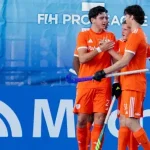Native speakers of the Urdu language instinctively know that the language is read from right to left but the numerical values mentioned within an Urdu sentence are read from left to right. To the untrained eye, however, the Urdu language has a lot of rules and variations.
The Urdu writing system is cursive so different letters join together to form a ligature (sequence of Urdu characters occurring without space).
The alphabet is highly context sensitive; each letter is written in a different form based on whether it is placed in the beginning, middle or end of a word, or if it occurs in isolated form by itself.
Many of the letters share a common base form but they differ by diacritical marks placed either above or below them.
All these rules are known to a calligrapher, whose expertise is the writing of Urdu in a simple and beautiful font. Nasrullah Mehr is one such Pakistani calligrapher.
He is renowned for his work and received the Yousaf Sadidi award by the Governor of Punjab in 1998.
He has been in the business for more than 30 years and has done calligraphy for various books, magazines and newspapers.
Enter the internet age, however, and his business dries up rapidly.
His son, Zeeshan Mehr, had joined the family trade and after business slowed down, he taught himself computer programming so he could come up with a more refined Urdu font for the internet.
This work took the father-son duo 10 years to complete.
However, they lacked the visibility and credibility to bring their Urdu font to the mainstream. They didn’t know how to carry out the scientific rigor of evaluation of their font, and their lack of finances and resources was proving to be a big hurdle in their path.
With the support of Dr. Umar Saif, Vice Chancellor of Information Technology University (ITU) and the technical assistance of linguistic technology expert, Dr. Agha Ali Raza, from ITU’s Center for Speech and Language Technologies (CSaLT) laboratory, they have developed a new Urdu font with enhanced sensitivity to the intricate Nastaliq style in which the language is written by calligraphers.
In contrast to previous computer Urdu fonts, this new font looks beautifully hand-crafted, with a very small footprint so that it can be quickly rendered by Internet browsers.
This Mehr-e-Nastaliq Web Font is compatible with more advanced OpenType Font (OTF) technology.

Unlike most other Nastaliq fonts available in the market, it has been licensed with the United States-based non-profit organization Creative Commons with a view to make it easy for popular operating system manufacturers like Microsoft to use it with their word processors.
The Urdu web font contains approximately 450 glyphs, including symbols, and contains support for the English language as well.
The font contains all the possible shapes of characters in ligatures and can change the form of an alphabet depending on the particular context.
It has a faster rendering speed as compared to other Nastaliq fonts. The font allows basic support for kashida (elongating characters at certain specific points) and kerning (spacing between characters).
Another advantage is that it’s OTF file size is only 107 KB. The font follows nastaliq rules while maintaining line height and it also includes support for numerous diacritics, including araab (pointing).
The font allows Urdu typography on platforms supporting OTF specifications including Microsoft Windows, Unix, Linux, and Android.
It will also enables web publishing, and electronic communication in Urdu using existing softwares supporting OTF specifications (without any plug-ins), such as Google Chrome, Internet Explorer, Netscape Navigator, Mozilla and Safari.
The new font has already received praise from leading calligraphers of the country.
Reviewing the font, Khalid Javed Yousfi, President of the Calligrapher’s Association of Pakistan, says that the Mehr-e-Nastaliq font is so perfect that you can’t tell if it has been written by hand or on a computer.
Zuhair Albazi, developer of the Zuhair Albazi Naskh and the Musa Albazi Naskh Font, says, “it is a real masterpiece of Nastaliq calligraphy. The font samples clearly demonstrate the proper and beautiful Nastaliq shapes. It is a huge leap in the OTF character based Nastaliq typography on a computer platform.”
He says that because of its cursive shaping every letter in Nastaliq requires a large number of shape variables for each joint and each position.This had made it extremely difficult for font designers to produce proper word shapes according to the Nastaliq calligraphic rules, he adds.
“Leading font experts had been trying to come up with an easy solution for Nastaliq style writing for years but were unsuccessful because they needed to come up with a system that could incorporate thousands of ligatures to provide good calligraphic shapes,” he says.
The problem was so complex that there wasn’t a single character based font that could produce satisfying shapes, he adds.
The Mehr-e-Nastaliq font is available for download at: http://csalt.itu.edu.pk/urdufont/
This story originally appeared on MIT Tech Review Pakistan








